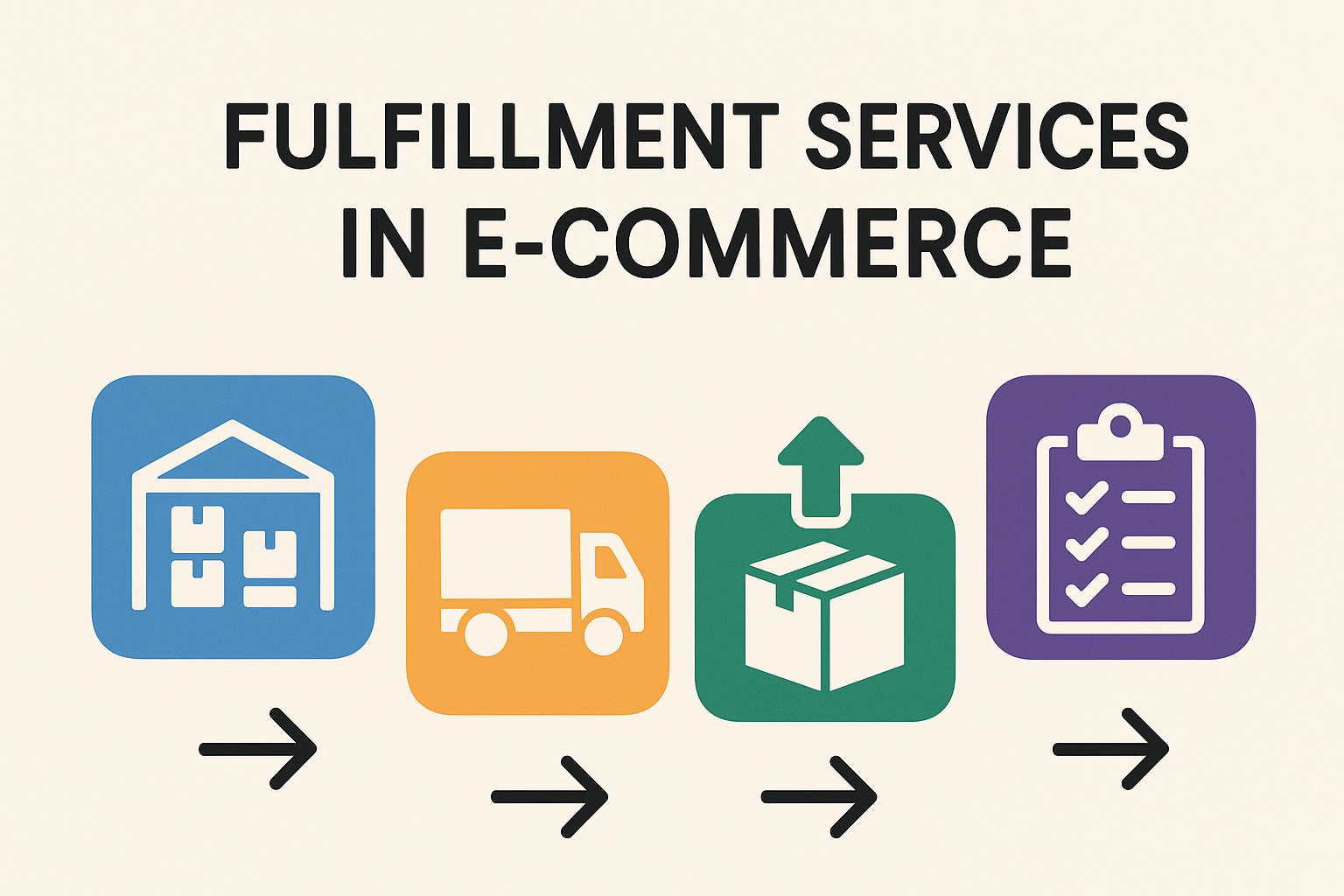Fulfillment service is a professional service that covers all logistical and operational processes in the e-commerce and retail sectors, starting from receiving customer orders to storing products, processing orders, packaging, and delivering them to the customer. This service helps businesses increase operational efficiency, reduce costs, and ensure customer satisfaction. Fulfillment centers effectively manage processes such as inventory management, order processing, packaging, and shipping, allowing businesses to focus on their core activities and enhance customer loyalty with fast and reliable deliveries.
What are the steps of fulfillment?
The fulfillment process involves a series of steps from receiving customer orders to delivering them. These steps are carefully managed at every stage of the fulfillment process to ensure efficiency and accuracy. Each step is crucial for enhancing customer satisfaction and ensuring the operational success of the business.
1. Inventory management and storage
Product acceptance: Products arriving from suppliers are received, inspected, and placed in the warehouse.
Stock control: Ensuring that products are stored in the correct locations and inventory levels are regularly updated.
2. Receiving the order
Order entry: Orders placed by customers are received through e-commerce platforms or other sales channels and integrated into the fulfillment system.
3. Order picking
Order picking: Warehouse staff or automated systems pick the ordered products from their respective locations in the warehouse.
Picking list: Picking lists are used to ensure that orders are picked accurately and completely.
4. Packaging
Packaging: The picked products are packaged using appropriate materials to prevent damage during shipping.
Labeling: Packages are labeled with the correct delivery address and other necessary information.
5. Shipping and logistics
Shipping preparation: Packages are prepared for handover to courier companies.
Shipping documents: Necessary shipping documents are prepared, and tracking numbers are generated.
Shipment: Packages are dispatched using the most efficient and cost-effective shipping method to ensure timely delivery to the customer.
6. Delivery and tracking
Delivery tracking: It is monitored whether the order reaches the customer on time and complete.
Customer notification: The customer is informed about the delivery status.
7. Return and exchange processes
Return acceptance: Products returned by the customer are received and inspected.
Return processing: Returned products are either added back to inventory or processed accordingly.
Customer service: Customer satisfaction is ensured during the return and exchange process.
What should be considered when choosing a provider for fulfillment services?
Choosing the right provider for fulfillment services is crucial for enhancing your business’s operational efficiency and customer satisfaction. Here are some key factors to consider when selecting the right fulfillment provider:
Experience and expertise: Consider the provider’s experience and expertise in the industry. Providers with many years of service and experience across different sectors are generally more reliable and professional.
Scope of services: Evaluate the range of services the provider offers. Check whether they cover all fulfillment processes, such as storage, inventory management, order processing, packaging, shipping, and return management.
Technological infrastructure: Review the provider’s technological infrastructure. The use of advanced software and automation systems in processes such as inventory management, order tracking, and reporting enhances efficiency and accuracy.
Logistics network and locations: Pay attention to the locations of the provider’s warehouses and distribution centers. Strategically placed warehouses ensure fast and cost-effective delivery. Additionally, if you plan to ship internationally, choose a provider with a global logistics network.
Customer service: Evaluate the quality of the provider’s customer service. A good customer service team can resolve issues quickly and effectively, which in turn enhances customer satisfaction.
Costs and transparency: Review the provider’s pricing structure. It is important that the costs are transparent and easy to understand. Check for any hidden fees or additional charges.
Customization and flexibility: Assess whether the provider can adapt to the specific needs of your business. A provider offering customized solutions and a flexible working structure can better respond to your changing requirements.
Reliability and references: To learn about the provider’s reliability, ask for references from current and former customers. The level of customer satisfaction can be an important indicator of the provider’s quality.
Return and recycling management: Find out how the provider handles return processes and product recycling. Effective return management is crucial for improving customer satisfaction.
Sustainability and eco-friendly practices: Review the provider’s environmentally friendly practices and sustainability policies. An eco-conscious partner can positively impact your brand image.
By considering these factors, you can choose the fulfillment provider that best meets your business needs and make your operations more efficient. The right choice will contribute to the growth of your business by enhancing customer satisfaction.





